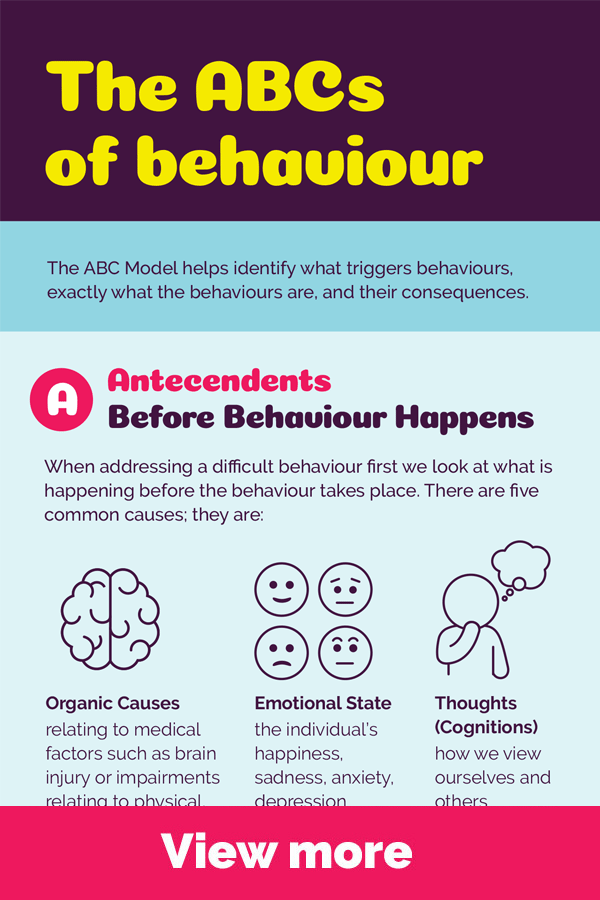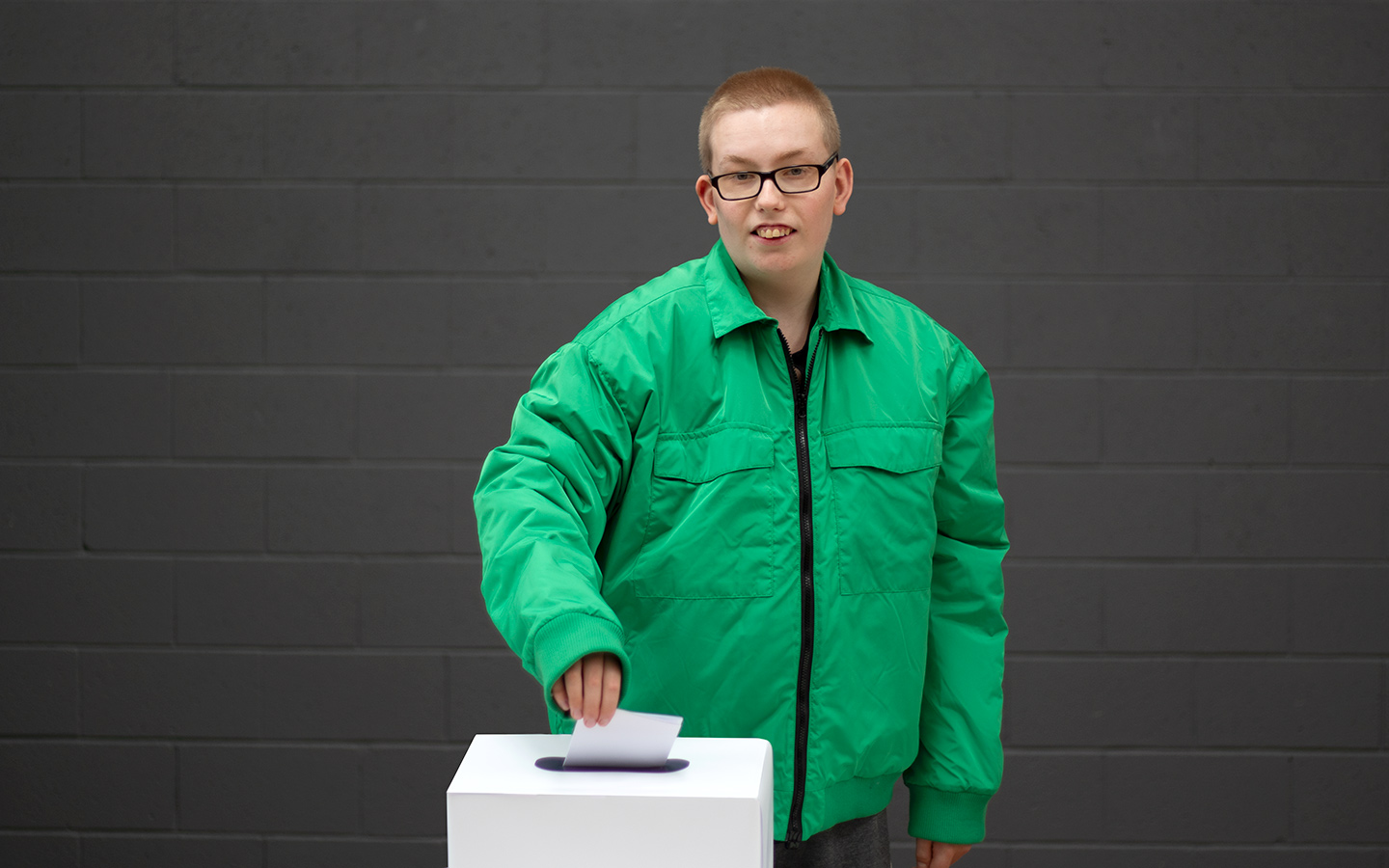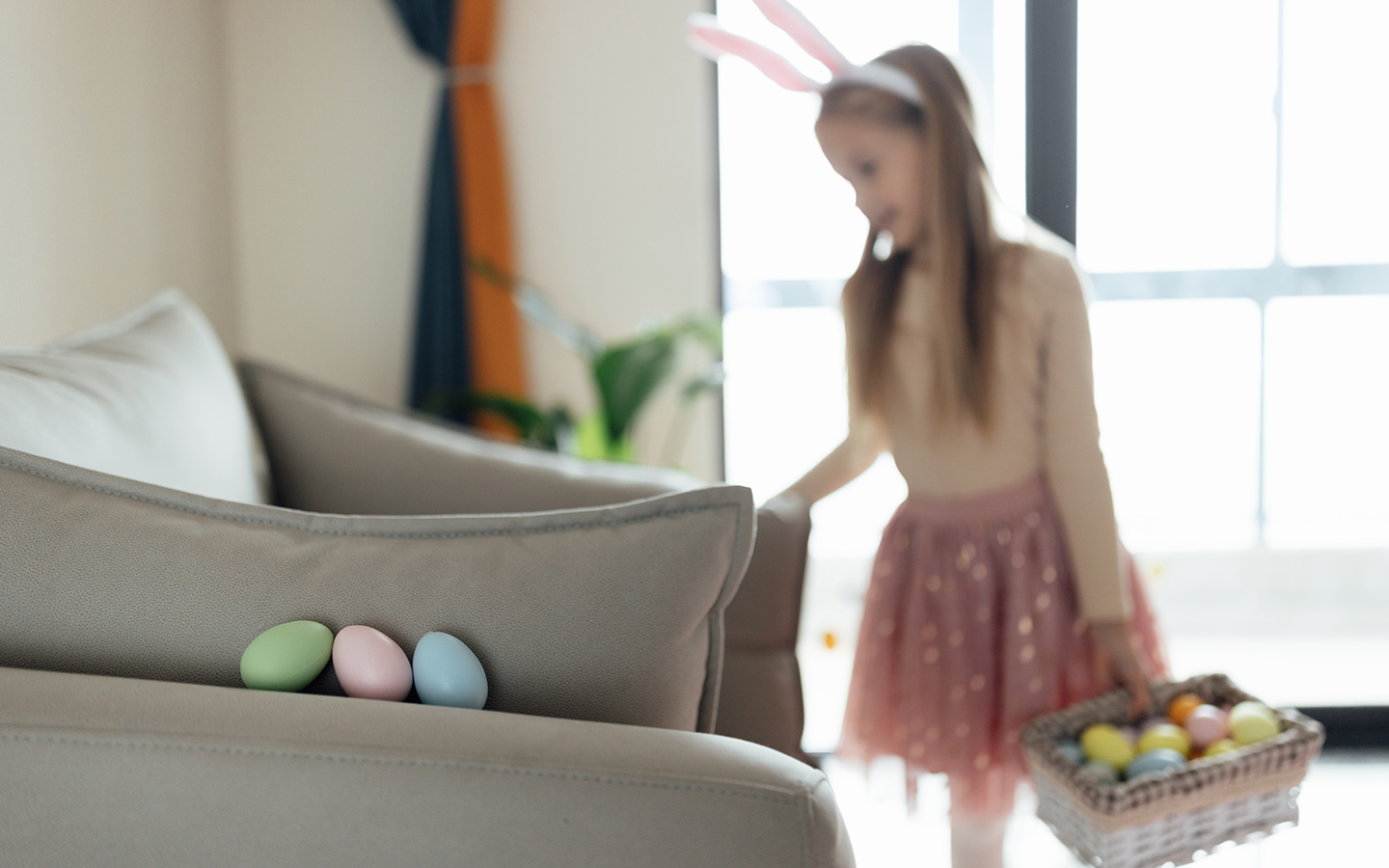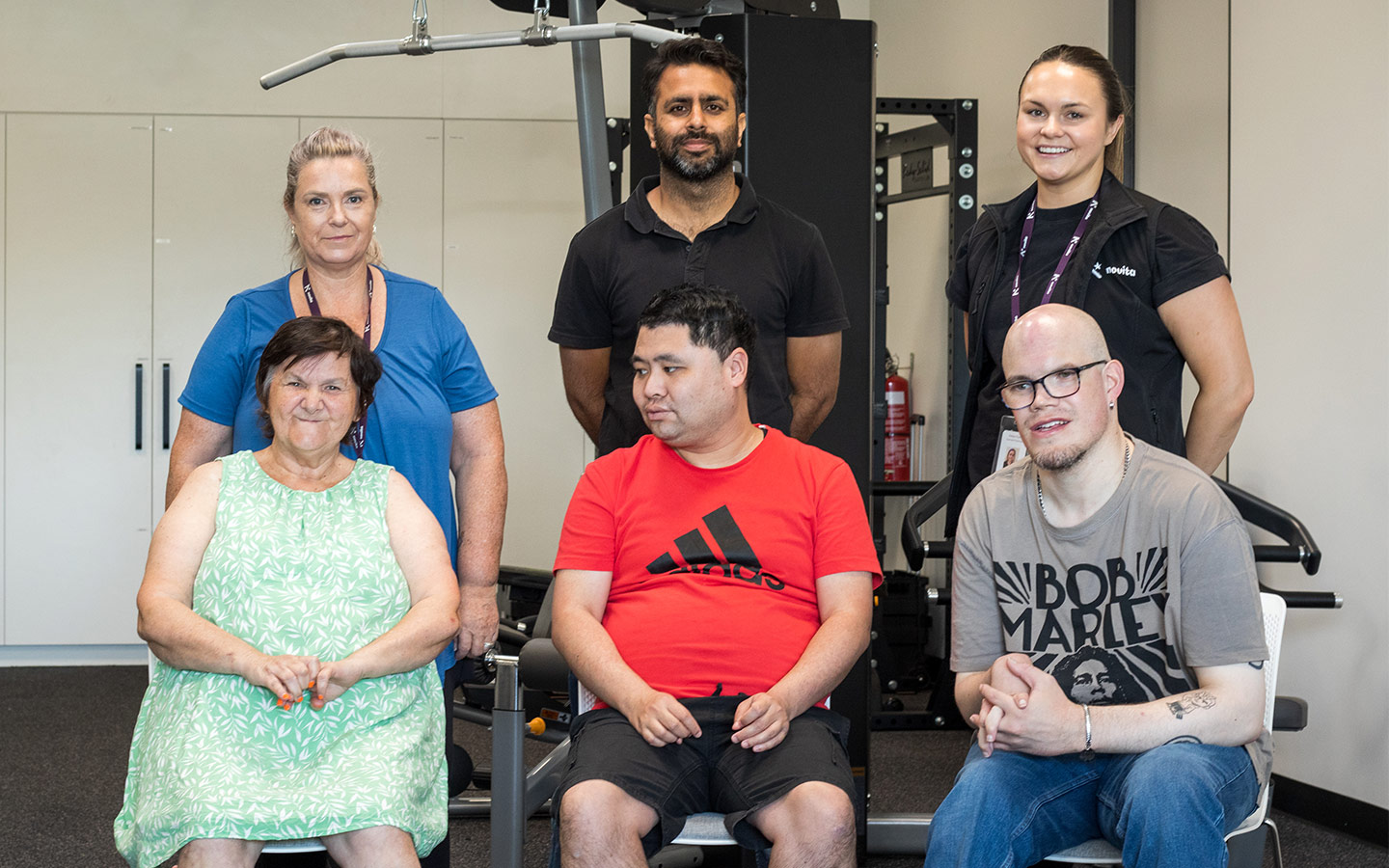Helpful Information
The ABCs of behaviour
access_time5min read
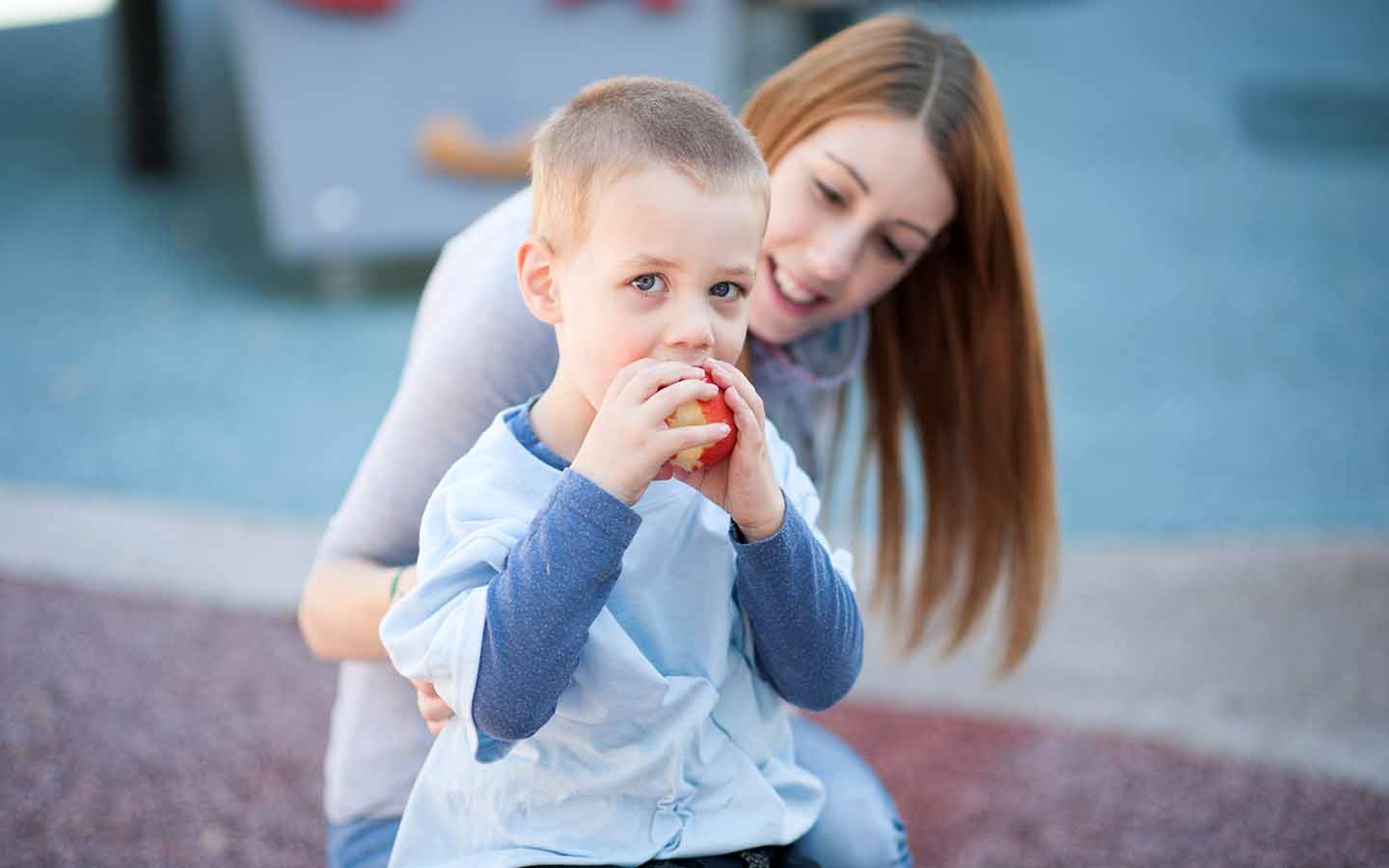
Picture This…
Every day a student in grade two gets out of his chair and walks around the classroom during the teacher’s instruction.
The student continuously interrupts the teacher and distracts his classmates by leaving his seat at inappropriate times. The teacher must stop the lesson daily to remind the student that it is not appropriate to be out of his chair at that moment. After a few weeks of this behaviour, the teacher and the student’s parents decide to reach out to a therapist to understand why the student keeps getting out of his chair during class.
Working together, the teacher, the parents and the therapist talk over what is happening in the environment before, during and after the student escapes from his seat. By shifting the focus from the student’s escaping behaviour to the environment the behaviour takes place in, it was discovered how the chair had been digging into his calves and his back. The student would squirm in his chair before getting up because he felt uncomfortable in a seat that was too small for him. His behaviour to escape from his seat helped him to avoid the unpleasant feeling of being in a chair that did not completely fit him. The teacher, therefore, learned the role the environment played in causing the student’s behaviour, which allowed him to understand what he could do to support the student.
The teacher was able to get him a different chair in the classroom, which resulted in the student being able to sit comfortably through the teacher’s whole lessons and complete all his work. In this case, the focus on adjusting the environment rather than the behaviour itself worked to support the student’s success in the classroom.
How Novita Therapists Approach a Behaviour
We target a specific behaviour in order to look at a combination of factors that may play a role in a kid’s behaviour. To understand how a behaviour accumulates over time, our therapists use a method known as the ABC of behaviour.
A– What is causing the behaviour (Antecedents)
B– What is the behaviour (Behaviour)
C– After the behaviour happens (Consequence)
A - Before Behaviour Happens (Antecedents)
The first thing we look at when addressing a difficult behaviour is what is happening before the behaviour takes place. There are five common causes of difficult behaviour; they are:
- Organic Causes: relating to medical factors such as brain injury or impairments relating to physical, behavioural, communication, or cognitive abilities.
- Emotional State: the individual’s happiness, sadness, anxiety, depression.
- Thoughts (Cognitions): how we view ourselves and others.
- Environment: what surrounds us, including the noise, temperature, activities, space.
- Social Relationships: how we interact with others in our environment.
With reference to the scenario regarding the student in the classroom, the environment the child was in played a major part in how his behaviour played out. The antecedent in this scenario was the fact that he was in a chair that was uncomfortable to him.
B - What is the Behaviour? (Behaviour)
Behaviour is defined by the way in which people act towards others. A person’s behaviour can be motivated by achieving any sort of outcome, like attention from a parent, for example. At Novita, we focus on both behaviours that are desirable and undesirable in order to improve our family’s quality of life. Offering praise to a child after they demonstrate positive behaviour, like sharing their toys or following directions, teaches the child how that good behaviour may lead to earning rewards. Here are a few ways parents can reinforce their child’s positive behaviour:
- Provide a toy, privilege, or treat after completion of homework
- Encourage the effort your child puts into their work
- Acknowledge and compliment their great listening skills
At Novita, we focus on observable behaviours. Such behaviours are measurable, meaning there is a clear beginning and end to the individual’s actions. Examples of common behaviours Novita families seek support for include:
- Escaping: running away, climbing
- Aggression: kicking, punching, screaming, biting
- Avoidance: withdrawal, picky eating
The behaviour described from the classroom scenario is the child getting up from his seat in class and walking around. His tendency to escape from his seat was distracting to the teacher and his classmates. By understanding the ABC of behaviour, we can learn the purpose behind why a behaviour happens. We can also then think about how to change the environment and teach a new skill to fulfil that same need of the child.
C - After the Behaviour Happens (Consequence)
The final element of the ABC of behaviour is consequence. Consequences can be seen in what happens once the behaviour has occurred. A result of a consequence can either increase or reduce the likelihood of the behaviour happening again.
Example of a consequence increasing the likelihood of a disruptive behaviour:
- What happens before the behaviour? Antecedent
The child sees a chocolate on the table - What is the behaviour? Behaviour
Screaming, punching - What happens after the behaviour? Consequence
Parent gives the child the chocolate to end behaviour
– Next time the child is more likely to scream and punch to get the chocolate
Example of a consequence reducing the likelihood of a disruptive behaviour:
- What happens before the behaviour? Antecedent
Child becomes bored in class - What is the behaviour? Behaviour
Speaking out, making inappropriate jokes - What happens after the behaviour? Consequence
Students in the class were asked to not acknowledge these outbursts
– Next time the child is less likely to speak out during class because he is not receiving the attention he wanted
From the previous example, the teacher reminding the student to sit back down indicates the consequence. Since the student’s behaviour continues to happen regardless of his teacher’s instruction, this consequence is not seen to be beneficial in reducing the likelihood of his behaviour. After working with the Novita therapist, it was discovered that adjusting his seat in the classroom resulted in ending his escaping behaviour from his chair.
How Novita Can Help
Our goal as an organisation is to work collaboratively with Novita families to support their child by working with their individual strengths. By doing so, we create a respectful and inclusive environment with our families to create a behavioural plan specific to the abilities of the child. The first meeting with Novita aims to learn more about the individual, along with their family. We are here to listen and support you and your family through this process.
If would like some support with managing behaviour contact us and we will be happy to answer any further questions or inquiries.
